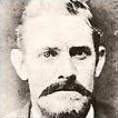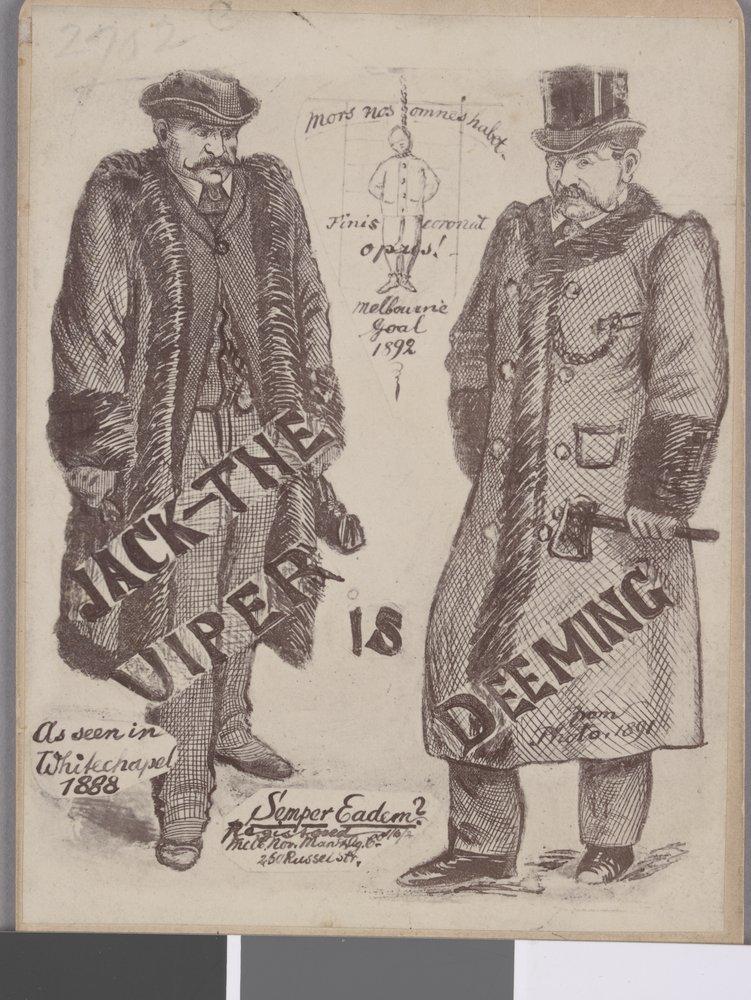
1853 - 1892
Frederick Bailey Deeming
Summary
Name:
Nickname:
The Windsor MurdererYears Active:
1891 - 1892Birth:
July 30, 1853Status:
ExecutedClass:
MurdererVictims:
6Method:
BeatingDeath:
May 23, 1892Nationality:
Australia
1853 - 1892
Frederick Bailey Deeming
Summary: Murderer
Name:
Frederick Bailey DeemingNickname:
The Windsor MurdererStatus:
ExecutedVictims:
6Method:
BeatingNationality:
AustraliaBirth:
July 30, 1853Death:
May 23, 1892Years Active:
1891 - 1892bio
Frederick Bailey Deeming was born on July 30, 1853, in Ashby-de-la-Zouch, Leicestershire, England. He was the son of Thomas Deeming, a brazier, and Ann Bailey. His childhood was marked by difficulties, and he was described as a challenging child. At the age of 16, he ran away to sea, which marked the beginning of a life filled with crime. He engaged in stealing and trickery to make money as he traveled.
In February 1881, Deeming married Marie James in Lower Tranmere, England. They had two daughters, Bertha and Marie, who were born in Australia. He and his family moved to Australia around 1882. While in Australia, he worked as a gasfitter, mainly in Sydney and Melbourne. Deeming was a hardworking employee, but he frequently got into trouble. He was arrested for theft of materials from his job and served six weeks in prison.
After being released, Deeming continued to face legal issues. In December 1887, he was charged with fraudulent insolvency, but he disappeared while out on bail. During this time, he used different names and tried to create a new life.
Deeming had a complex family life. He had a troubled relationship with his wife Marie. He had other children and laid claim to a fortune, which he promised to his family. However, much of this turned out to be deceitful. While living in Melbourne, he married Emily Lydia Mather in September 1891, using a false identity.
By this time, Deeming had built a reputation that attracted attention. He was known for being bold and often drew scrutiny for his flashy behavior and treatment of women.
murder story
Frederick Bailey Deeming was active in Cape Town from 1888 to 1889, but his exact movements are unclear. He seems to have returned to Birkenhead at least once during this time. Deeming was involved in a diamond mine swindle in 1889. He returned to England on the steamship Yumna, noted for showing off jewelry and money.
In November 1889, Deeming arrived in Hull and stayed in Beverley. He pretended to be a retired sheep farmer named Harry Lawson. He married Helen Matheson bigamously on February 18, 1890, but after a honeymoon, he vanished, taking gifts he had given her. He returned to Birkenhead, gave money to his first wife, Marie, and their children, and claimed he was going to South America.

Deeming was arrested in Montevideo for fraud and sentenced to nine months in prison. After his release in July 1891, he moved to Rainhill and used the name Albert Williams. He leased Dinham Villa and was said to have a "sister" and her children living with him, though they were probably Marie and their children. He was soon seen with Emily Lydia Mather, whom he married on September 22, 1891.
After moving to Australia in December 1891, Deeming murdered Mather on December 24 or 25 and buried her body under the hearthstone, covering it with cement. Her body was discovered on March 3, 1892, after complaints about a bad smell. An autopsy found that Mather had suffered severe injuries and her throat had been cut.
Following Mather's murder, police connected Deeming to his earlier life in Rainhill, where he had killed Marie and their four children. Their bodies were found buried under Dinham Villa’s re-concreted floor, with most having their throats cut. The murders had occurred around July 26, 1891.
Deeming was arrested in Southern Cross on March 12, 1892. He denied his identity but suggested that he knew about Mather’s murder. Following his return to Melbourne, he was tried for Mather's murder on April 25, 1892, where the defense claimed he was insane. He was found guilty and executed on May 23, 1892.
Speculation arose that Deeming might have been Jack the Ripper due to the gruesome nature of his crimes and the timing of his stay in England during the Whitechapel murders. However, investigations did not confirm this connection. Deeming's death mask was displayed as part of the Ripper theory, but later opinions dismissed him as a suspect. His legacy remains linked to both the murders he committed and the Ripper speculation surrounding his name.